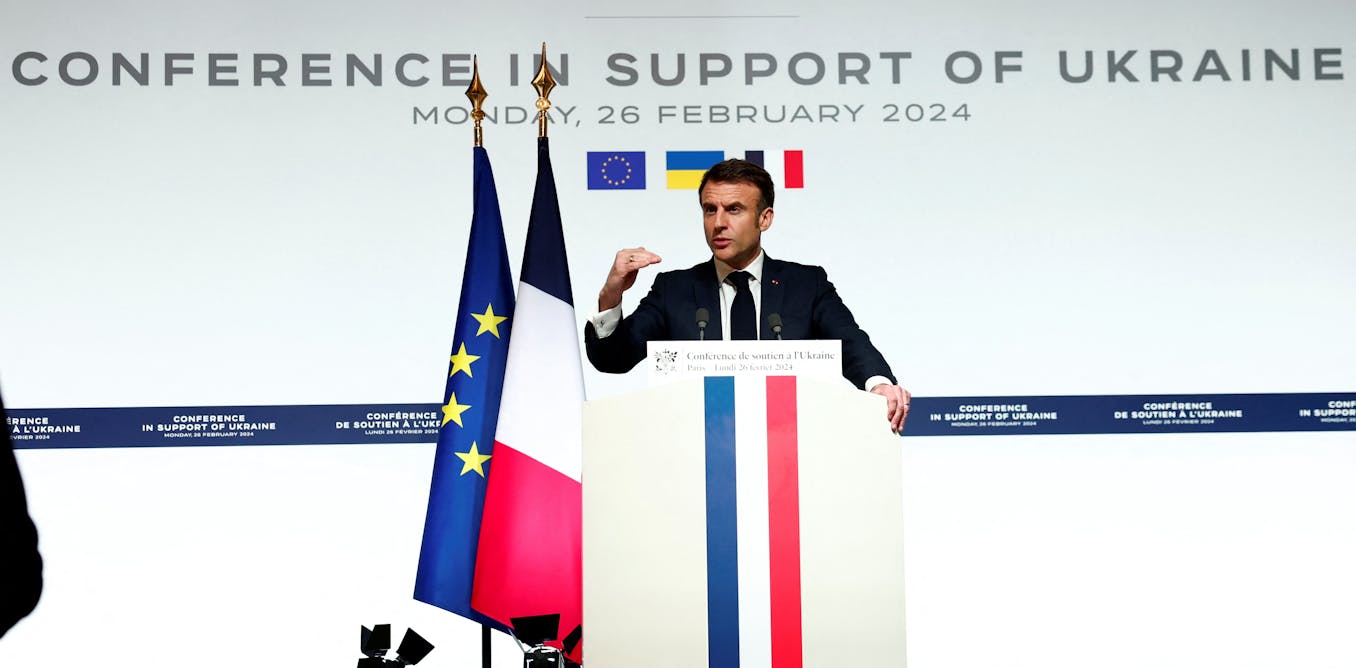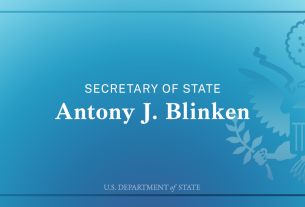The French president, Emmanuel Macron, has said sending western troops to fight in Ukraine “could not be ruled out”. After hosting a meeting of 25 European leaders in Paris on February 26, Macron said that there was “no consensus” on committing ground troops to the conflict in Ukraine but added: “Nothing should be excluded. We will do whatever it takes to ensure that Russia cannot win this war.”
Until now, Nato has confined itself to training Ukrainian military forces and supplying them with defensive weapons. Member states fear that directly confronting Russian forces in Ukraine would risk a massive escalation. And Vladimir Putin and his senior ministers have regularly issued threats that Russia could resort to using its nuclear arsenal in the case of a larger conflict.
At present, Nato is also conducting its largest military exercise since the cold war. Steadfast Defender runs from January until May and involves all 31 member states. Aimed at enhancing the alliance’s collective defence capabilities and readiness, it is the largest exercise since Reforger in 1988, which involved 125,000 troops from the US, Germany, Canada, France and Denmark.
General Christopher Cavoli, Nato’s supreme allied commander for Europe, said: “Steadfast Defender 2024 will be a clear demonstration of our unity, strength and determination to protect each other, our values and the rules-based international order.”
Importantly, one aspect of the exercises is the involvement of US and Canadian forces, which is designed to demonstrate the speed and size of Nato’s reinforcement capabilities. It acts both as a reassurance to European Nato member states and as a demonstration to potential enemies of the ability Nato has to put large forces into the field. Exercises are part of the communication of deterrence.
The exercise is meant to simulate an, “emerging conflict scenario with a near-peer adversary”. This is a thinly disguised reference to Russia, which shows that Nato is beginning to take the threat of direct conflict with that country seriously.
Mass Communication Specialist 1st Class Danielle Serocki/APFootage/Alamy Stock Photo
During the cold war, Nato undertook regular large-scale exercises. For example, Exercise Lionheart, led by the UK in 1984, involved nearly 58,000 British soldiers and airmen of a total force of 131,565, including troops from the US, the Netherlands and what was then West Germany.
Since the dissolution of the Soviet bloc, Nato has searched for a new identity. Its focus shifted in the 1990s from protecting common territory to protecting members’ common interests, as it did by intervening in the wars in Bosnia in 1995 and Kosovo in 1999, when it officially approved this new strategic concept.
Need for unity
A demonstration of Nato unity and military capacity is important, coming after two years of disunity over how to respond to the war in Ukraine and amid wrangling over supplies of arms by Ukraine’s western allies. It has become more significant following recent remarks by former president Donald Trump that Nato members who did not meet the spending guidelines would no longer be protected by the US.
Members are supposed to spend at least 2% of their annual GDP on defence – but it’s more complicated than that. Some nations’ defence spending is wholly allocated to Nato. Others, meanwhile, might set their defence spending at less than 2%, but their spending per head is greater than that of those who meet the Nato guideline.
For example, Luxembourg falls short of the 2%, spending only 0.72%. But in per head terms it spends US$921 (£726), which is more than Poland (3.9%) or France (1.9%).
The US may spend 3.5% GDP on defence, but not all of that is allocated to Nato. Much of the US’s strength is deployed in the Pacific and on its home territories. So it’s misleading to judge the value of Nato membership in these terms.
They key clause in the Nato treaty is article 5, which governs collective security and compels members to respond if a fellow member is attacked by a hostile third party. The US is the only Nato member state to have invoked article 5, following the 9/11 attacks. It received assistance from other Nato members in Afghanistan and more widely in the “war on terror”.
Is Nato battle ready?
A significant problem Nato faces however, is not in deploying the troops it has, but in supplying them. As has been demonstrated by the efforts to provide equipment and ammunition to Ukraine, Nato has neither the stockpiles nor the manufacturing capacity to supply a lengthy modern war.
This is because Nato has long planned on what’s known as a “come as you are” war, which means it has the capacity to fight for only as long as the equipment and supplies last. For this reason, Nato’s strategy has always been, in the event of a conflict, to bring it to a conclusion as quickly as possible.
Admiral Rob Bauer of the Royal Netherlands Navy, Nato’s most senior military commander and military adviser to its North Atlantic Council, spoke at the Warsaw Security Forum in October 2023. He said: “We need large volumes. The just-in-time, just-enough economy we built together in 30 years in our liberal economies is fine for a lot of things – but not the armed forces when there is a war ongoing.”
A number of European countries have already distanced themselves from Macron’s remarks, including Poland, the Czech republic and Sweden, whose Nato membership has finally been approved by Hungary and which is set to become the alliance’s 32nd member.
But Russia has seized on Macron’s remarks, with Kremlin spokesman Dmitry Peskov telling reporters that even discussing the idea of western troops being sent to fight in Ukraine represents a “very important new element”. He added: “In that case, we would need to talk not about the probability, but about the inevitability (of a direct conflict).”



